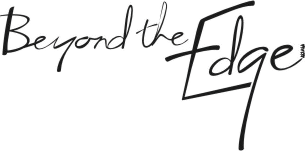Tom Salinsky’s improv wisdom
 I’m at Improvention in Canberra – a festival of improvisers from all over Australasia, and a smattering from elsewhere. There’s shows, and competitions, and workshops, and serious discussions, and partying, and lots of coffee and other beverages. I feel like an imposter. There, glad I got that off my chest. And that’s all I’m going to say about my own personal demons. Back to Improvention.
I’m at Improvention in Canberra – a festival of improvisers from all over Australasia, and a smattering from elsewhere. There’s shows, and competitions, and workshops, and serious discussions, and partying, and lots of coffee and other beverages. I feel like an imposter. There, glad I got that off my chest. And that’s all I’m going to say about my own personal demons. Back to Improvention.
Today there was a chat with Tom Salinsky from The Spontaneity Shop in London. I’m not a huge fan of the “Sage on the Stage” approach, but Tom brought enough humour, humility and sage advice to make it work even for me. Tom (right) was interviewed by Steve Kimmens.
When asked why he loves improv, Tom answered what many of us might say: it brings together humour, storytelling and working collaboratively. And, you never get to the end of learning improv.
Ain’t that the truth?
It seems that improv has inspired much of Tom’s life and work, from finding a partner (“Improvisers are nice people. If I was going to marry someone, I’d marry an improviser.” Apparently he did.) to scripting a play he’s taking to the Edinburgh Festival, Coalition. Yes, that’s right – the uses for improvisation even extend to writing a scripted play.
This story really helped illustrate an important aspect of improvisation. Tom told us how he colluded with another student at school for the weekly cross-country race to always come in last. The two of them would make sure they were the last to cross the line and sprint for the finish. Consequently, he never found out how fast he could really run.
Maybe we’re doing this to ourselves all the time, setting up situations where we are guaranteed to fail, thereby never having to actually RISK failure? Live improvisation, on the stage, with that always-present risk of danger and imminent failure, can show an audience that players can actually delight in chaos and failure. And the audience can share in that delight. “A triumphant failure is more satisfying that slinking off the stage.” This for me, is one of the main differences between stand-up routine, where the performance has been honed and crafted, to an improvisation performance where the players and the audience participate in something together, as it is created.
And here’s an interesting point about corporate improvisation workshops. At something like Improvention, we pretty much know what we’re getting into (yep, even me) and we sign up for the opportunity to perform. In corporate workshops it’s fair to say most people prefer not to perform, so more care has to be taken to prepare people. Bridges need to be built so as they can see the connection between what they are learning from improv and how that relates to everyday corporate situation such as presenting, leading meetings, making a sale, negotiating, etc. It seems to me that building a non-judgmental atmosphere and one where it’s okay to fail, indeed expected, is a pretty hard ask when these conditions are generally frowned upon. It’s one thing to suggest holding back on judgment and critical thinking, quite another to actually do it. One thing to suggest it’s okay to make mistakes and fail, quite another to internalise that and really believe it. This is one of the reasons I find applied improv so interesting and useful. It’s one of the few approaches I’ve come across that really builds the capacity to be non judgmental and to really risk failure.
And Tom’s final point is one that I buy into absolutely. He commented that many corporate workshops are about finding out what makes people different. Improv workshops are about finding what we have in common. Hallelujah to that.

Thanks for the summary Viv, great insights 🙂